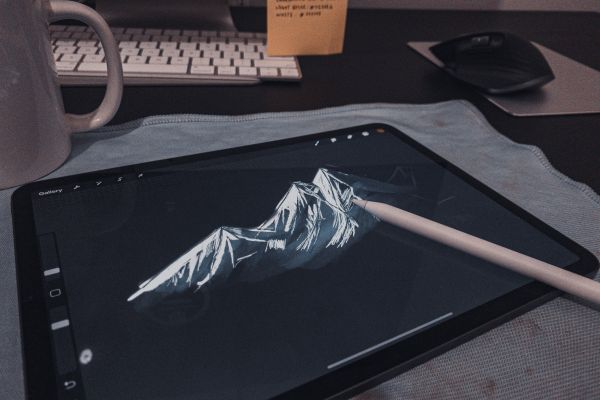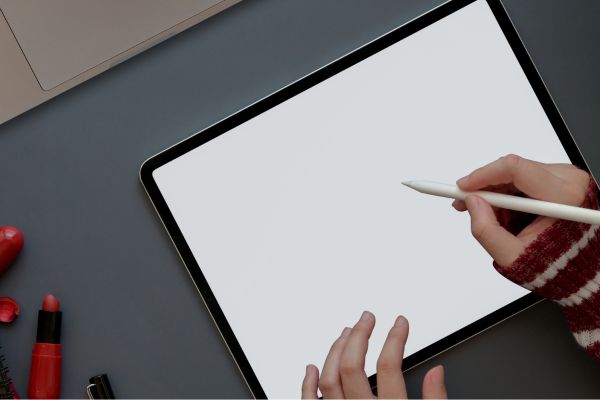Transform Your Freelance Design with These Powerful Tools
If you are a design freelancer, you know that competition is fierce and it is essential to stand out in the market. One way to elevate your freelance design career is to harness the power of specialized tools that can boost your creativity and improve your efficiency. In this article, we’ll explore some of the best tips and tools for freelance designers.
Freelancer Design Tips: Why Using Powerful Tools Matters
Working as a design freelancer requires high-quality creative and technical skills. However, relying solely on your talent can limit your growth potential. By investing in powerful tools, you will be able to expand your capabilities and deliver exceptional work to your clients.
Additionally, these tools can help you streamline your workflow, saving you time and making you more efficient. With access to advanced features, you’ll be able to deliver high-quality projects faster and more effectively.
Freelance Design Tips: Essential Tools for Freelance Designers
Now that we understand the importance of tools to enhance your freelance design career, let’s explore some essential options you should consider adopting in your day-to-day work:
- Project management software: Organize your projects, track deadlines and tasks, and improve communication with your clients using tools like Asana or Trello.
- Design tools: Hone your skills with design software like Adobe Creative Suite or Sketch, and take advantage of plugins and extensions to speed up your work.
- Resources and libraries: Access to a variety of resources such as icons, fonts, and pre-made templates can save time and ensure professional results.
Freelance Design Tips: Building a Solid Portfolio
Your portfolio is your showcase as a freelance design. To attract clients and stand out from the competition, it is essential to create an attractive and professional portfolio. Here are some tips for building a solid portfolio:
- Select your best work to showcase your breadth of skills.
- Highlight projects that are relevant to your target audience.
- Take care in the visual presentation of your portfolio to convey professionalism.
- Include testimonials from satisfied customers to increase your credibility.
Freelancer Design Tips: Effective Networking Strategies
A strong network is essential to boosting your freelance design career. When you build strong professional relationships, you have the opportunity to land new projects and expand your presence in the industry. Here are some effective networking strategies:
- Attend industry events, conferences and workshops to meet other design professionals.
- Utilize online platforms such as LinkedIn to connect with colleagues, clients and industry influencers.
- Be open to collaborations and partnerships that can expand your reach and opportunities.
Tips for Freelance Design: Pricing and contracts
Setting fair prices and using well-structured contracts are key to a successful freelance design career. Here are some best practices to consider:
- Research market prices to ensure you are charging a competitive price for your work.
- Create clear, comprehensive contracts that protect your interests and establish expectations for both parties.
- Consider offering different service packages or payment options to suit customers’ needs and budgets.
Key Takeaways:
- Using powerful tools can help freelance designers be more efficient and creative in their work.
- Project management software, design tools, and additional features can elevate the quality of work delivered.
- Building an attractive and professional portfolio is key to attracting potential clients.
- Effective networking helps you expand your professional network and find new job opportunities.
- Setting fair prices and using well-structured contracts are essential to protecting your interests as a freelancer.
Essential Tools for Design Freelancers
Every design freelancer knows that having the right tools can make a world of difference in their workflow and productivity. Whether you are just starting out or looking to upgrade your toolkit, these essential tools will help you elevate your design game to the next level.
1. Project Management Software:
Managing multiple projects efficiently is crucial for design freelancers. Invest in project management software like Trello or Asana to stay organized, collaborate with clients and team members, and keep track of deadlines. These tools will streamline your workflow and ensure that you deliver projects on time.
2. Graphic Design Software:
As a design freelancer, a powerful graphic design software is a must-have. Adobe Creative Cloud, including Photoshop, Illustrator, and InDesign, is the industry standard. With these tools, you can create stunning visuals, edit images, and design beautiful layouts.
3. Stock Photography and Illustration Resources:
Enhance your designs by accessing a wide range of high-quality stock photos and illustrations. Websites like Shutterstock, Adobe Stock, and Unsplash offer a vast collection of visuals that you can use in your projects. Remember to check the licensing terms of each resource to ensure proper usage.
4. Prototyping and Wireframing Tools:
Prototype and wireframe your designs effectively with tools like Sketch or Adobe XD. These tools allow you to create interactive and user-friendly prototypes, enabling you to test and validate your design concepts before finalizing them.
5. Color and Typography Tools:
Choose the perfect color palettes and font combinations for your designs using tools like Coolors and Google Fonts. These resources provide you with endless options to create visually appealing and cohesive designs.
6. Design Asset Libraries:
Expand your design possibilities by accessing design asset libraries like Creative Market and Envato Elements. These platforms offer a wide range of design templates, icons, and illustrations that you can customize and incorporate into your projects.
Comparison of Essential Design Freelancer Tools
| Tool | Features | Cost |
| Project Management Software (Trello) | Task management, deadline tracking, collaboration | Free (with paid plans for advanced features) |
| Graphic Design Software (Adobe Creative Cloud) | Photoshop, Illustrator, InDesign, and more | Subscription-based |
| Stock Photography and Illustration Resources (Shutterstock) | Wide range of high-quality visuals | Subscription-based |
| Prototyping and Wireframing Tools (Sketch) | Create interactive prototypes | Subscription-based |
| Color and Typography Tools (Coolors) | Color palette generation, font combinations | Free (with paid plans for additional features) |
| Design Asset Libraries (Creative Market) | Templates, icons, illustrations | Purchase individual assets |
Building a Strong Portfolio
Your portfolio is your key to success as a design freelancer. It’s the visual representation of your skills, creativity, and expertise. A well-crafted portfolio not only showcases your talent but also attracts potential clients and helps you stand out in a competitive industry.
To create a compelling and professional portfolio, consider the following tips and strategies:
- Showcase your best work: Select a diverse range of projects that highlight your skills and capabilities. Include samples that demonstrate your ability to tackle different design styles, industries, and mediums.
- Organize your portfolio: Arrange your projects in a logical and easily navigable manner. Categorize them based on relevant criteria, such as design type, target audience, or industry.
- Highlight your process: Provide insights into your design process for each project, conveying your problem-solving abilities, creativity, and attention to detail. Include sketches, wireframes, or concept development to showcase your design thinking.
- Show client satisfaction: Include testimonials or quotes from satisfied clients to demonstrate your professionalism and the positive impact of your work.
- Keep it concise: Select a limited number of high-quality projects to include in your portfolio. It’s better to have a few exceptional pieces than a large quantity of mediocre ones.
- Update frequently: Regularly refresh your portfolio with your latest and most impressive work. Keep it up to date with your evolving skills and style.
By following these tips and strategies, you can create a strong portfolio that effectively showcases your design expertise, captivates potential clients, and sets you apart from the competition.
Effective Networking Strategies
Networking is a crucial aspect of any freelance career, and as a design freelancer, it is essential to establish connections with other professionals, clients, and industry influencers. Effective networking can open doors to new opportunities, collaborations, and projects that can elevate your design freelance business. Here are some valuable tips to help you navigate the world of networking and make meaningful connections:
1. Attend Industry Events and Conferences
Industry events and conferences are ideal opportunities to meet like-minded professionals and potential clients. Make sure to research and attend relevant design conferences, workshops, and networking events in your area. These events often provide valuable insights, exposure to the latest industry trends, and opportunities to connect with influential individuals.
2. Utilize Online Platforms and Communities
Take advantage of online platforms and communities specifically designed for networking among design professionals. Websites like Behance, Dribbble, and LinkedIn can help you showcase your portfolio, connect with fellow designers, and establish your presence in the design community. Engage in discussions, share your work, and actively seek collaborations through these platforms.
3. Leverage Social Media
Social media platforms such as Instagram, Twitter, and Facebook offer immense potential for networking. Create a professional profile that reflects your design expertise, share your work regularly, and engage with industry influencers and potential clients. Building a strong online presence can expand your network, attract new opportunities, and establish your credibility as a design freelancer.
4. Collaborate with Others
Collaboration is a powerful networking tool. Seek opportunities to collaborate with other designers, agencies, or industry professionals on design projects. Collaborative projects not only enhance your portfolio but also expose you to new perspectives, skills, and networks. By working with others, you can expand your reach and create valuable connections in the design community.
5. Maintain and Nurture Relationships
Networking isn’t just about meeting new people; it’s also about maintaining and nurturing existing relationships. Stay in touch with your connections, send personalized follow-up messages, and engage in meaningful conversations. Offer support, share resources, and celebrate the achievements of your network. By fostering genuine relationships, you can establish a strong network that can support your design freelance business in the long run.
By implementing these effective networking strategies, you can develop a robust network that opens doors to new opportunities, collaborations, and potential clients. Remember, networking is an ongoing process, so be proactive, genuine, and consistent in your efforts to expand your design freelance network.
Pricing and Contracts
To ensure a successful design freelance career, it is crucial to establish fair pricing for your services and implement well-structured contracts. This section provides valuable tips and best practices for pricing your work competitively and protecting yourself through effective contract agreements.
Design Freelancer Pricing Tips
Setting the right price for your design services is essential to attract clients and maintain a profitable business. Consider the following pricing tips to ensure your rates align with industry standards:
- Research your market: Study the pricing strategies of other design freelancers in your niche to get an idea of market rates. This will help you determine a competitive yet profitable price range for your services.
- Consider your experience and expertise: Take into account your level of experience, the complexity of the project, and your unique skills when pricing your services. Clients are often willing to pay a premium for highly skilled designers.
- Factor in project scope: Assess the scope of each project individually and consider the time, effort, and resources required to complete it. Breaking down your pricing based on project requirements can ensure fair compensation.
- Offer tiered packages: Providing different pricing packages with varying levels of service can cater to a wider range of clients. This allows them to choose a package that best fits their needs and budget.
Freelance Contract Best Practices
Employing solid contract best practices safeguards both the freelancer and the client, ensuring a clear understanding of expectations and protecting against potential disputes. Keep the following guidelines in mind when creating your freelance contracts:
- Define project scope and deliverables: Clearly outline the scope of work and the specific deliverables you will provide. This helps manage client expectations and establishes a foundation for successful project completion.
- Include payment terms: Clearly state your rates, payment schedule, and acceptable methods of payment. This avoids misunderstandings and ensures timely compensation for your services.
- Specify project timeline: Establish a timeline for project milestones and completion. This helps manage client expectations and allows you to plan your workload effectively.
- Include revision and approval process: Clearly define the number of revisions included in your contract and outline the process for client feedback and approval. This helps manage client expectations and prevents scope creep.
- Consider intellectual property: Address ownership and licensing of intellectual property rights in your contract. Specify whether the client will have full ownership or if you retain the rights to showcase the project in your portfolio.
- Include termination and dispute resolution clauses: Include provisions for contract termination and a clear dispute resolution process in case conflicts arise. This protects both parties and helps resolve issues efficiently.
By implementing these pricing and contract best practices, you can navigate the world of design freelancing with confidence. Establishing fair pricing and using solid contracts will not only protect your interests but also build trust with clients, ultimately leading to a successful and sustainable freelance career.
By leveraging these powerful tips and tools, you can revolutionize your design freelance career and take it to new heights. Implementing these strategies will not only enhance your creative output but also improve your efficiency, allowing you to deliver exceptional results to your clients and stay ahead of the competition.
Continuously honing your skills is key to long-term success. Invest time in expanding your knowledge, keeping up with the latest design trends, and exploring new techniques. This will not only inspire fresh ideas but also ensure that you are equipped to tackle any design challenge that comes your way.
Building a strong network is essential for growth in the design freelance industry. Connect with other professionals, attend industry events, and engage with online design communities. By fostering these connections, you can gain valuable insights, collaborate on projects, and open doors to new opportunities that can propel your freelance career forward.
Remember to always value your work and protect yourself by using comprehensive contracts. Establish fair pricing for your services by considering your expertise, project scope, and industry standards. This will not only ensure that you are properly compensated for your skills but also foster trust and confidence with your clients.
As a design freelancer, the road to success may have its challenges, but with determination, dedication, and the right tools, you can thrive in this dynamic industry. So, embrace these powerful strategies, stay passionate about your craft, and unlock your full potential as a design freelancer.





